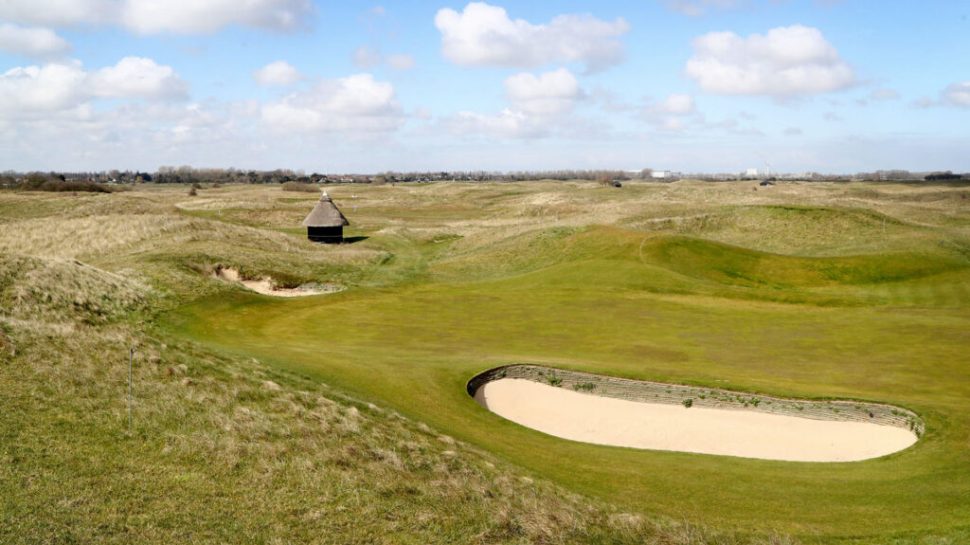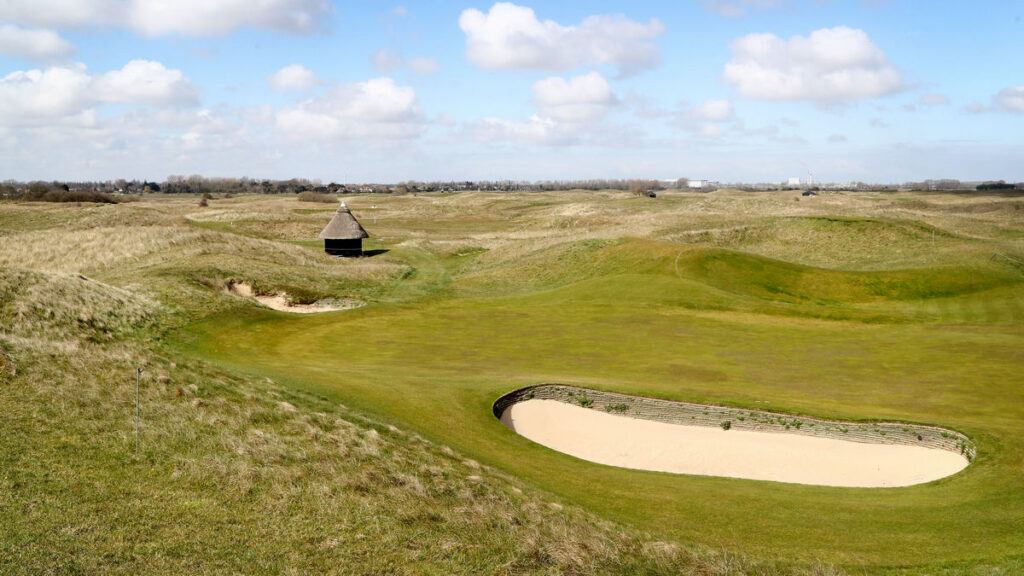
Estimated reading time: 4 minutes
Royal St George’s, which will host the 149th Open Championship when it begins at Sandwich on the Kent coast on Thursday morning, evokes different emotions in different people. Bernard Darwin, golf correspondent for The Times when Walter Hagen won at St George’s in 1922 and also when Bobby Locke did likewise over the same links 27 years later, made no secret as to which camp he was in.
In his seminal book The Golf Courses of the British Isles, published in 1910, Darwin was unstinting in declaring his love of the course. “Sandwich has a charm that belongs to itself,” he wrote, “and I frankly own myself under the spell. The long strip of turf on the way to the 7th hole, that stretches between the sandhills and the sea; a fine spring day, with the larks singing as they seem to sing nowhere else; the sun shining on the waters of Pegwell Bay and lighting up the white cliffs in the distance; this is as nearly my idea of Heaven as is to be attained on any earthly links.”
Royal St George’s is set to host golf’s true test once again, Open week has begun #TheOpen pic.twitter.com/oL3aNliUxt
— The Open (@TheOpen) July 11, 2021
In 1959, Ian Fleming published the seventh book in his James Bond series, Goldfinger, which includes a match between Bond and the eponymous villain at a course Fleming for some reason chose to thinly disguise as ‘Royal St Marks’. Very thinly; to cite one example, the par-three 6th at St George’s is called ‘The Maiden’. At St Mark’s it’s styled ‘The Virgin’. As you may know, Goldfinger had a very fast and loose attitude towards the Rules of Golf, but I wonder if Fleming was thinking of Darwin’s words when he sent his two protagonists off into their “game of golf on a beautiful day in May with the larks singing over the greatest seaside course in the world”? Given their evident association with St Andrews, I don’t expect many R&A members to share that opinion.
One man who wouldn’t was the late Seve Ballesteros, who first played there in the 1975 PGA Championship, in what would prove to be the last significant tournament victory for a 45-year-old Arnold Palmer. Ballesteros told Dudley Doust for his 1982 book Seve: The Young Champion that it was “so cold, so much wind, so much different from any other course I had known. Especially I didn’t like the fact there were no trees for my eyes to get reference… by the time I had played one round [a 78] I didn’t like anything about Sandwich”. Still, from such an unpromising introduction to links golf, Seve would win the Open three times and also the PGA when it was held at St George’s in 1983, the last time it was played anywhere other than at Wentworth.
There have been two 21st century winners of the Open at Sandwich: in 2003, Ben Curtis, a 300-1 outsider ranked the 396th best player in the world, and in 2011, a little over two months after Seve had passed away, Darren Clarke, a 200-1 shot ranked 111th in the world and at 42 the oldest champion for 44 years. He got home by three shots from the current USPGA champion, Phil Mickelson, and the present world No. 1, Dustin Johnson. Jon Rahm, the new US Open champion, a Spaniard who was inspired to take up the game because of Ballesteros, is the favourite for the Open at odds of around 7-1 (Johnson is at 18s). But recent St George’s history would suggest the next champion might not be among the more obvious candidates. We will find out on Sunday.
You can follow Robert Green on Twitter @robrtgreen and enjoy his other blog f-factors.com plus you can read more by him on golf at robertgreengolf.com
